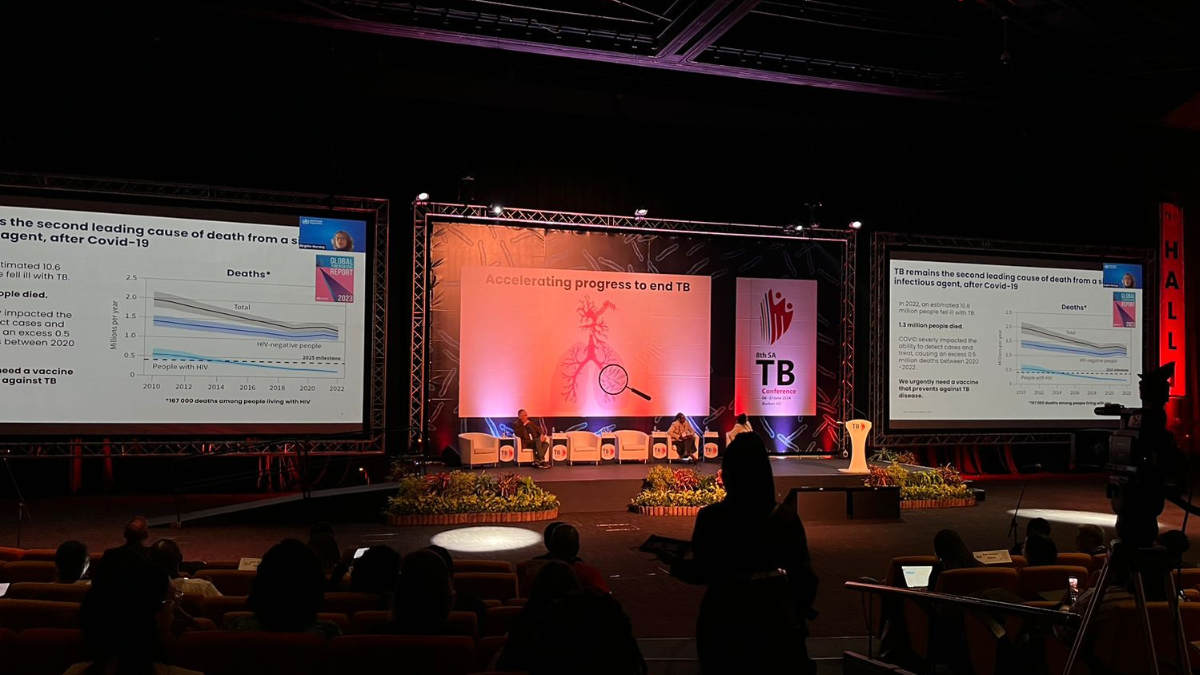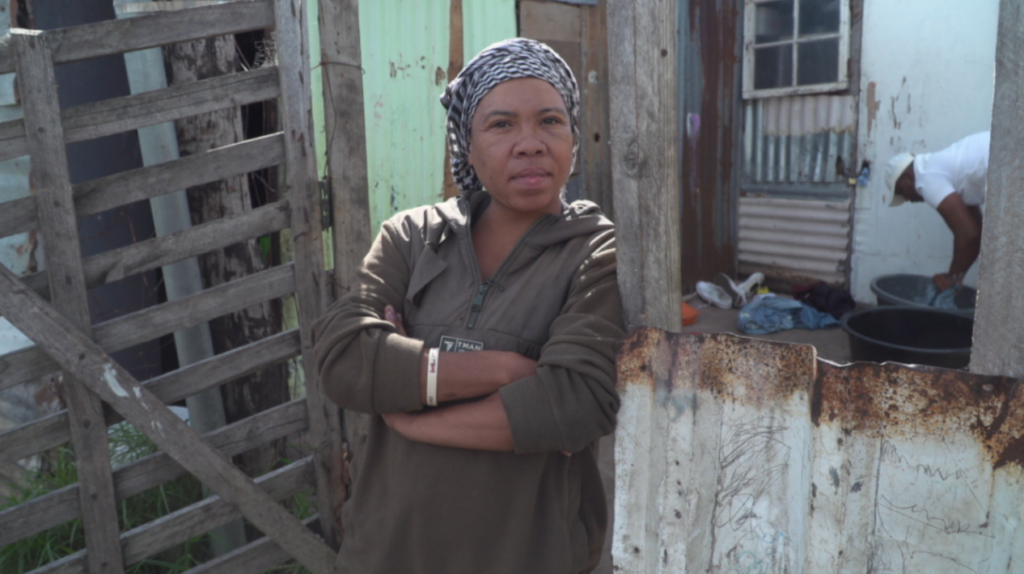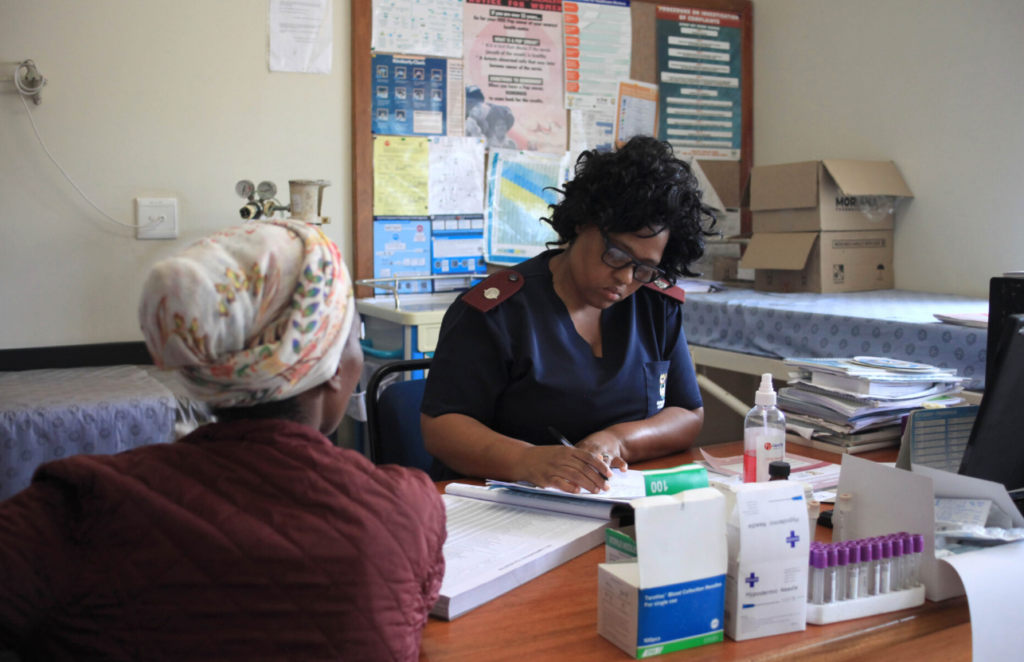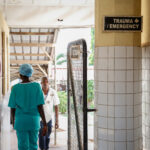- From early next year, the health department could look to start using tests that can show if the genetic make-up of tuberculosis (TB) germs has changed in such a way that they could be resistant to antibiotics.
- This is from a presentation by the department’s chief TB director at the 8th South African TB Conference in Durban on Wednesday.
- Tests like these can help to slow down resistance to bedaquiline, an antibiotic that can slash treatment time for a form of TB that doesn’t respond to the usual regimen by two-thirds.
- This will be especially useful, seeing that results from three provinces show that in about 6.5% of people with this type of TB, bedaquiline has already become ineffective.
In today’s newsletter, health reporter Zano Kunene looks at bedaquiline resistance in patients sick with tuberculosis. Sign up.

The health department is looking to start using DNA technology from early next year to check for changes in the genetic make-up of the tuberculosis (TB) germ which could make it resistant to antibiotics, a presentation by Norbert Ndjeka, the department’s chief TB director, showed on Wednesday at the 8th South African TB Conference in Durban.
Scientists, activists and policymakers from across the world, including from South Africa, are attending the event.
This approach could help to slow down resistance to bedaquiline, a drug that cuts treatment for multidrug-resistant tuberculosis (MDR-TB) down from 18 months to six.
MDR-TB is a form of the disease in which the usual antibiotics don’t work, and so a more complex — and often more expensive — course of drugs, called second-line treatment, has to be used.
Although TB is curable, the disease kills 150 people a day in South Africa.
Early results show that in about one in 16 patients with MDR-TB in KwaZulu-Natal, the Western Cape and the Eastern Cape, bedaquiline can’t kill the germs that cause the illness, Ndjeka told Bhekisisa ahead of the conference.
This is worrying, because if patients for whom bedaquiline won’t work are started on this drug, they’ll remain sick, more and more of the bugs can become resistant and so hardy strains can spread.
At the moment it can take up to eight weeks to find out which drugs will actually work for a patient who has MDR-TB, because bacterial cultures have to be grown from a patient’s sputum and then tested with the different drugs that are options for the treatment regimen, to see how the bug reacts.
But tests that use DNA technology can yield results in a few days (in some cases, within two days), which means patients can get on the right treatment sooner, and not unnecessarily be given bedaquiline if it won’t work in the first place.
Why shorter treatment is better
Before bedaquiline was used, the type of antibiotics to treat MDR-TB, like kanamycin, amikacin or streptomycin, could cause serious hearing loss — in up to half of people who took the drug, some studies show. In addition, the medicines are given as injections deep into a muscle, which can be painful and make people stop taking the treatment.
Patients who have become resistant to bedaquiline, or who are infected with an already resistant strain of the TB germ, have to be treated with a personalised course of medication that may take as long as 18 months and which would include drugs from a list of 11 options, and cost more than the shorter bedaquiline treatment.
By the end of 2022, around 280 000 people in South Africa had TB, of which about 11 000 cases were of the MDR type.
In September last year, the health department introduced a new treatment plan, called BPaL-L and which includes bedaquiline, against MDR-TB. By the end of April, 2 456 patients had started this course, Ndjeka’s presentation at the conference showed.
On the BPaL-L plan, someone takes a combination of four types of antibiotic tablets — bedaquiline, pretomanid, linezolid and levofloxacin — for six months. (For the first two weeks of treatment, bedaquiline is taken every day, and then only three times a week; the others are all taken daily.)
The health department pays R3 148 for six months of bedaquiline treatment for one patient, down from the close to R5 600 they used to pay, after an investigation by the Competition Commission.
Having a shorter treatment for MDR-TB patients is important, said Ndjeka, because “we have better retention [of] patients than in the longer regimens”.
While the complete set of data on South Africa’s bedaquiline roll-out (as part of the BPaL-L regimen) will only be available later this year, results from three provinces already show that resistance to bedaquiline has been found in 149 patients out of a group of 2 308 with MDR-TB (close to 6.5%), including in patients on the new treatment plan, Ndjeka told Bhekisisa.
What causes resistance: the drugs or the bug?
TB drugs are one of the big culprits of antimicrobial resistance (AMR).
Antimicrobial resistance means the germs that cause a disease are no longer killed by the drugs that used to work well before, and so it becomes more difficult to cure the illness.
In bacterial infections, like TB, some germs will naturally change over time to try and protect themselves against antibiotics. The longer it takes for the infection to be cleared up (that is, for enough of the germs to be killed so that someone isn’t sick anymore), the more time the bugs have to change and the bigger the chance that some of these changes will indeed work to stop the antibiotic from killing them. As time goes by, more and more of these resistant bacteria can develop.
In the case of TB, a six-month course of the antibiotics rifampicin, isoniazid, pyrazinamide and ethambutol is commonly used to clear up the infection caused by the germ Mycobacterium tuberculosis. But once the bug has become resistant to this first line of treatment, a patient has to be put on a more complex and expensive course of antibiotics.
Why bedaquiline resistance is a worry
When someone has a bacterial infection that takes long to clear up, a combination of antibiotics is used so that there’s more than one way to kill the bug. The idea is to hit hard and fast, so that the infection can be wiped out as quickly as possible and so limit the chance for some germs escaping the drug — and make sure there’s not enough time for them to become resistant. It’s like deploying different weapons at different spots in a battle.
Bedaquiline is a good option to add to the combination for treating MDR-TB, because it doesn’t have to be taken for such a long time and has fewer side effects than older drugs. Results from a large study in South Africa in 2022 showed that a treatment regimen that includes bedaquiline kills the resistant bug in 70% of patients compared with using only injectable antibiotics (such as kanamycin), which cleared up the infection in only 57% of patients.
The WHO has recommended the BPaL-L regimen as the preferred treatment for MDR patients since 2022.
However, bedaquiline stays in a patient’s body for longer than the other antibiotics in the mix do once someone stops taking it, and so there’s more chance that resistance can begin to develop against this drug, Ndjeka explained.
“When you have a population and people just stop taking the treatment, it’s a problem … the risk with this resistance [bedaquiline] is that if we don’t take measures it will just continue growing.”
Moving forward
Finding quicker ways to test patients for resistance to TB drugs and teaching them about why it’s important to stick with their treatment are two ways the health department aims to tackle this emerging reality, says Ndjeka.
Resistance to bedaquiline isn’t new, though; in fact, it’s been seen around the world, including in South Africa, when the drug first replaced kanamycin and amikacin injections to treat MDR-TB in 2018.
Initially, bedaquiline was part of a regimen of pills that included seven drugs that had to be taken over nine months. But recommendations from the World Health Organisation showed that swapping out four of the drugs for pretomanid instead worked just as well and shortened the treatment to six months.
In a South African study, researchers tracked possible bedaquiline resistance in 2 023 patients treated for MDR-TB at public hospitals and clinics between 2015 and 2019. At the start of the study period, 76 patients — just under 4% — were already resistant to the drug even though they had never taken bedaquiline before.
This was worrying, because resistance was expected to be more likely in patients who had previous exposure to the drug.
Data from three provinces from March 2023 to February 2024, shows this figure has jumped to about 6.5%, said Ndjeka.
South Africa’s TB Recovery Plan, a strategy introduced in 2022 and which gets updated every year to undo the backslide in fighting TB during the COVID-19 pandemic and its restrictions, outlines ways to deal with bedaquiline resistance.
Part of this is to speed up the way the country tests how anti-TB drugs work in patients, and with the new DNA-based method, a single test can be used to check for resistance against many drugs — fast.
But two things will remain important to fight TB in South Africa, says Ndjeka. One is to find patients with resistant disease; the other is to start treatment and make sure they stay on their medicines.
“You can’t deny 2 000 people [treatment] because you might get 100 resistant among them [and for whom treatment won’t work]. We are making the effort to find these people early and give them the treatment.”
Zano Kunene is a health journalist at Bhekisisa.








